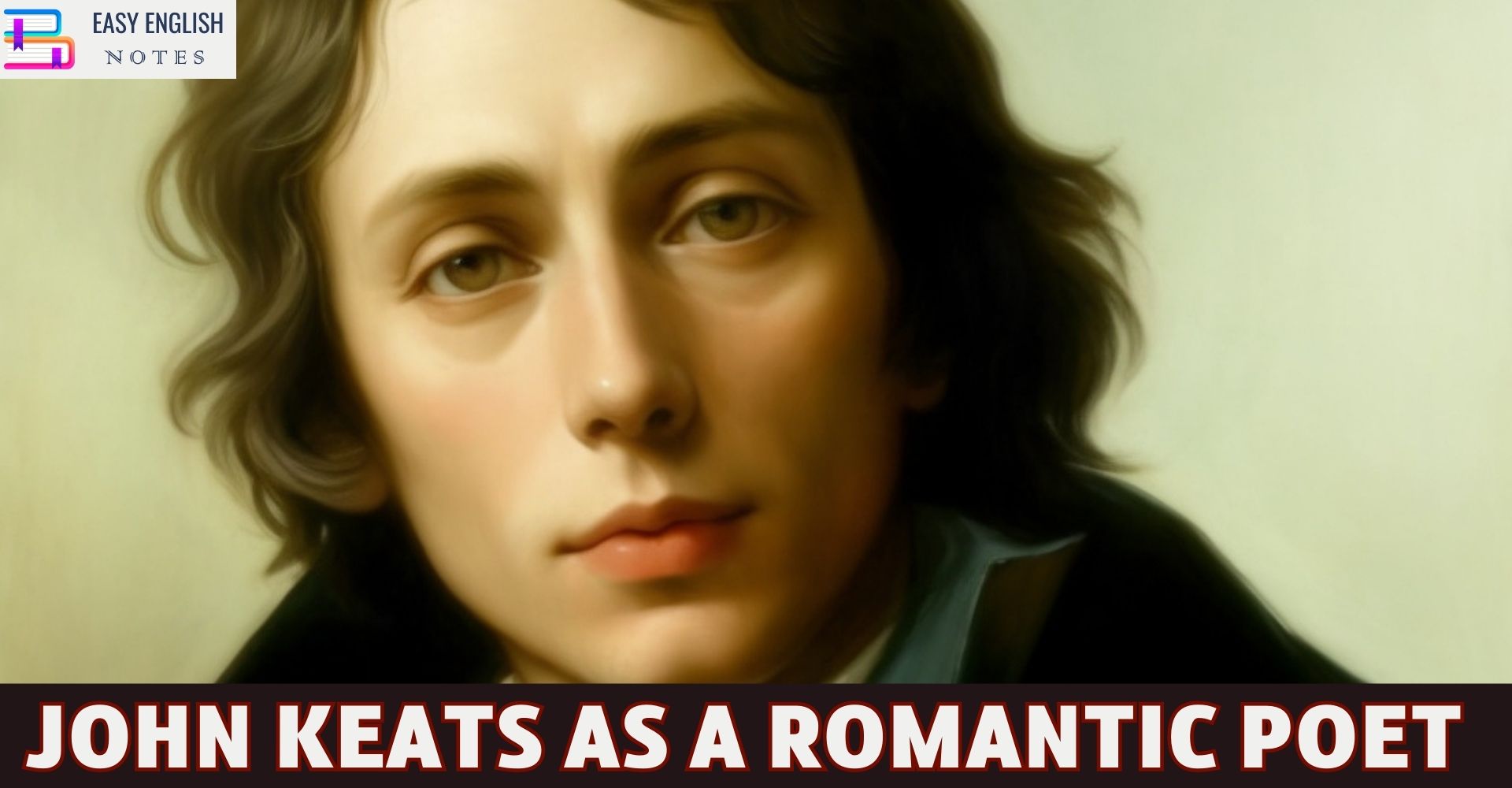John Keats belongs to the second generation of romantic poets. He is essentially a romantic poet despite his great love for Greek myths and literature. Speaking of the romantic contents of his poetry, Saintsbury observes: “Keats, as none of his own contemporaries did, felt, expressed and handled on the exact change wrought in English poetry by the great romantic movement. Coleridge, Wordsworth, Scott and even Southey, to some extent, were the authors of this, but being the authors, they were necessarily not the result of it. Byron was fundamentally out of sympathy with it, though by accidents of time and chance he had to enlist; Shelley, an angel and an effectual angel of poetry, was hardly a man still less an Englishman. But Keats felt it all, expressed what of it he had time, and strength to express, and left the rest to his successors. helped, guided, furthered by his own example.”
Keats possesses those features which entitle him to be called a romantic poet. All romantic poets were essentially escapists and Keats is no exception to it. No social or political tendencies of his age are to be seen in his poetry. He does not want to be involved in sordid realities of the present times. Hence, he flies to the Middle Ages or the Greek age. In The Eve of St. Agnes, the poet takes us back to the medieval world with its knighthood and chivalry. and tells us the romantic story of Porphyro and Madeline.
He loved Greek mythology as well and wrote Endymion and Hyperion. In the words of Courthope, “The poetry of Keats exhibits the progressive efforts of a man of powerful genius to create for his imagination an ideal atmosphere unaffected by social influences of his age.” Medievalism and Hellenism are two main features of Keats poetry.
Also Read :
- Compare Hamlet with Macbeth, Othello and other Tragedies
- “The Pardoner’s Tale” is the finest tale of Chaucer
- Prologue to Canterbury Tales – (Short Ques & Ans)
- Confessional Poetry – Definition & meaning
All the romantic poets had great love for nature. Keats also enjoyed the sensuous aspects of nature. He loved nature for her own sake and ooked with wandering eyes upon the face of nature with the rapture of a lover gazing at the face of the beloved. He did not derive any moral lesson from Nature as was done by Wordsworth. He did not intellectualize her as Shelley did. Keats is content to render Nature as she is. He loved and interpreted nature “more for her own sake and less for the sake of sympathy which the human mind can read into her with its own workings and aspirations. He had grown up neither like Wordsworth under the spell of lake and mountain, nor in the glow of millennial dreams like Shelley, but London-born and Middlesex- bred, was gifted with a delighted insight into all the beauties and sympathy with all the life of the woods and fields.”
Keats is captured by the beauties of nature. He admires the very spirit of Nature whom he invokes as maker of poets.
Romanticism has been defined as the” Renaissance of wonder”, i.e.. re-awakening of interest in the supernatural. For the romantics, there are more things in heaven and earth than people dream of. There is a world of the unseen behind and above the world of the senses. Keats is also fully alive to this super sensuous world. It is the magic and mystery, the belief in ghosts and fairies, of the middle ages, that captivate his heart. The Eve of St. Mark and The Eve of St. Agnes are based upon two different medieval superstitions, and in the La Belle Dame Sans Merci we get the medieval belief that certain cruel fairies entangle mortals in their love, and then betray them, and ruin them. Lamia is based on the superstition of those dark ages regarding the serpent -women, and the harm they could cause by their beauty.
Another salient feature of romanticism is its melancholy note. Keats’s poetry is also coloured by melancholy.
It may also be mentioned that romantic suggestiveness reaches the acme of its development in the poetry of Keats. He suggests much more than he describes. Each one of his countless images opens up to our view far-reaching perspectives. Each epithet is extraordinarily rich in suggestiveness. He lingers lovingly over each word and lends it with a wealth of meaning.
The poetry of Keats also, like that of the romantics in general, is a spontaneous outpouring of the heart. An object of beauty inspires him to instant creative activity. He hears the song of a nightingale, is thrilled by it, and within a few hours composes the Ode to A Nightingale, one of the richest odes in the language. While ‘correctness’ was the key-note of the pseudo- classics, music and melody are the characteristics of romantic poetry. Keats’s poetry has a haunting music of its own and this captivating music comes to him by nature. The 18th century classics confined themselves to one metre, i.e., the heroic couplet. Keats, along with the other romantics, uses a number of metres with great effect and mastery. He is equally adept in the use of blank verse, the Spenserian Stanga and the ballad metre.
To sum up, Keats is a romantic poet because of his love of nature, of superstition, of fine phrase and music, of melancholy and middle ages, and of wonder and mystery. He is intensely subjective and emotional: he loves art for the sake of art. In his poetry, however, there is a balance between the formal perfection of the classics, and the emotion and imagination of the romantic”. “Keats was a true romantic, and they both (Keats and Shakespeare) made the essential act of true romanticism” (Middleton Murry). In fact, we find in Keats’s poetry the quintessence of romanticism.
PLEASE HELP ME TO REACH 1000 SUBSCRIBER ON MY COOKING YT CHANNEL (CLICK HERE)











